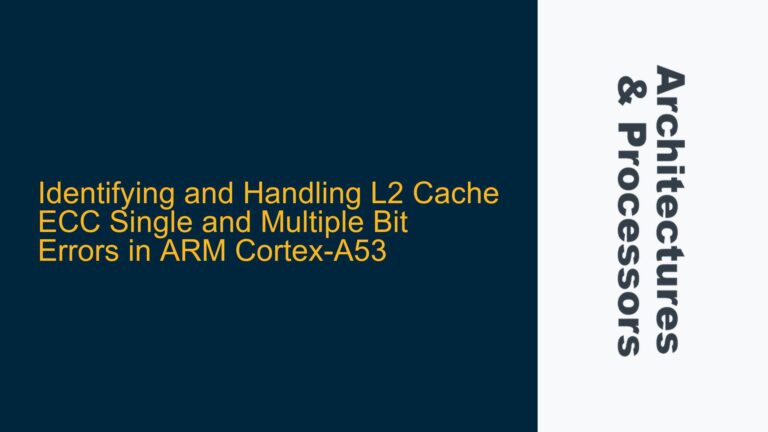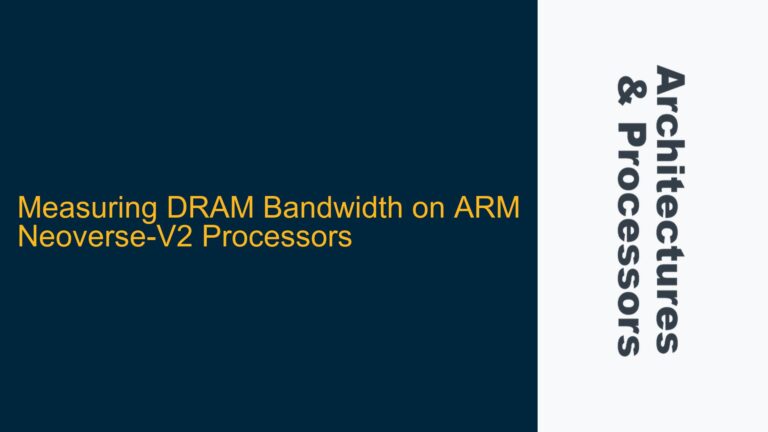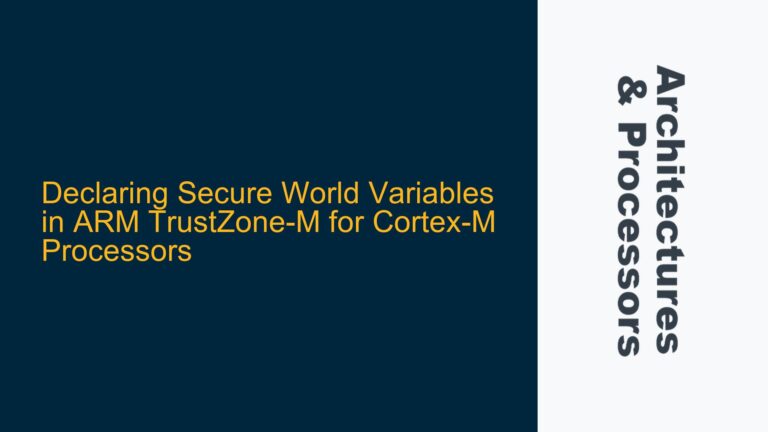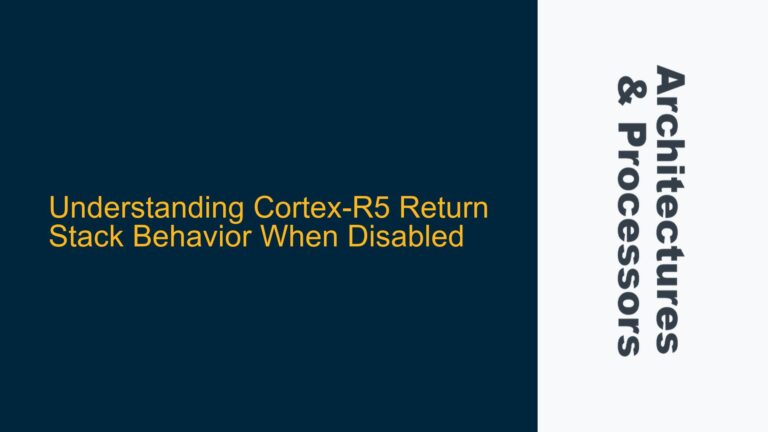ARM Cortex-M Flash Memory Protection Mechanisms
The ARM Cortex-M series of microcontrollers is widely used in embedded systems due to its efficiency, low power consumption, and robust performance. However, one critical aspect that developers must address is the security of the firmware stored in the microcontroller’s flash memory. Unauthorized access to this firmware can lead to intellectual property theft, reverse engineering, and even malicious modifications. Understanding the protection mechanisms available for flash memory on ARM Cortex-M devices is essential for safeguarding your code.
ARM Cortex-M microcontrollers typically include several hardware-based features designed to protect the contents of flash memory. These features are often vendor-specific but generally fall into a few common categories. The primary protection mechanisms include read-out protection (ROP), debug interface control, and flash memory encryption. Each of these mechanisms serves a distinct purpose and can be used in combination to provide a robust security solution.
Read-out protection (ROP) is a common feature that prevents unauthorized reading of the flash memory contents. When ROP is enabled, the microcontroller will not allow external tools or debuggers to read the flash memory. This is typically implemented through a set of configuration bits or registers that can be programmed during the manufacturing process or by the end-user. Once ROP is enabled, any attempt to read the flash memory will result in an error or the return of dummy data.
Debug interface control is another critical aspect of flash memory protection. ARM Cortex-M microcontrollers typically support debugging interfaces such as JTAG and SWD (Serial Wire Debug). These interfaces are essential for development and debugging but can also be exploited to extract firmware if not properly secured. Most vendors provide options to disable these interfaces permanently or require a specific sequence of actions to re-enable them. Disabling the debug interfaces effectively prevents unauthorized access to the flash memory through these channels.
Flash memory encryption is a more advanced protection mechanism that involves encrypting the contents of the flash memory. This ensures that even if an attacker manages to extract the firmware, it will be in an encrypted form and unusable without the corresponding decryption key. Encryption can be implemented at the hardware level, with the microcontroller including a dedicated encryption engine, or at the software level, where the firmware is encrypted before being written to the flash memory. Hardware-based encryption is generally more secure, as it is less susceptible to side-channel attacks.
In addition to these hardware-based protection mechanisms, developers can also implement software-based techniques to further enhance the security of their firmware. These techniques include code obfuscation, checksum verification, and runtime integrity checks. Code obfuscation involves modifying the firmware to make it more difficult to reverse engineer. This can be achieved through various methods, such as inserting dummy code, reordering instructions, or using custom encryption algorithms. Checksum verification involves calculating a checksum of the firmware and comparing it to a known value at runtime. If the checksum does not match, the firmware may have been tampered with, and the microcontroller can take appropriate action, such as halting execution or entering a secure mode. Runtime integrity checks involve verifying the integrity of the firmware during execution, typically by comparing critical sections of the code to known values or by using cryptographic signatures.
Vendor-Specific Implementations and Their Limitations
While ARM Cortex-M microcontrollers provide a range of protection mechanisms, the specific implementation and effectiveness of these mechanisms can vary significantly between vendors. This variability is due to the fact that ARM licenses the Cortex-M core to various semiconductor manufacturers, who then integrate it into their own products with additional features and peripherals. As a result, the flash memory protection mechanisms available on one vendor’s microcontroller may differ from those available on another’s.
One common limitation of vendor-specific implementations is the lack of standardization. For example, while most vendors provide some form of read-out protection, the exact method of enabling and disabling this protection can vary. Some vendors may use a simple configuration bit, while others may require a specific sequence of commands or the use of a proprietary tool. This lack of standardization can make it difficult for developers to implement consistent security measures across different products.
Another limitation is the potential for vulnerabilities in the protection mechanisms themselves. While hardware-based protection mechanisms are generally more secure than software-based ones, they are not immune to attacks. For example, some vendors’ read-out protection mechanisms have been found to be vulnerable to side-channel attacks, where an attacker can exploit physical characteristics of the device, such as power consumption or electromagnetic emissions, to extract the firmware. Similarly, some debug interface control mechanisms have been found to be susceptible to brute-force attacks, where an attacker repeatedly attempts to guess the sequence of actions required to re-enable the interface.
Flash memory encryption, while generally more secure, also has its limitations. One common issue is the management of encryption keys. If the keys are stored in the flash memory itself, they may be vulnerable to extraction if the read-out protection is bypassed. Additionally, if the keys are stored in a separate secure element, the communication between the microcontroller and the secure element may be vulnerable to interception or tampering. Furthermore, the encryption algorithm itself must be robust and resistant to known cryptographic attacks.
Despite these limitations, vendor-specific implementations can still provide a high level of security when properly configured and used in combination with other protection mechanisms. Developers should carefully review the documentation provided by the vendor to understand the specific protection mechanisms available on their chosen microcontroller and how to configure them effectively. Additionally, developers should stay informed about any known vulnerabilities or weaknesses in the protection mechanisms and take appropriate measures to mitigate them.
Best Practices for Securing Firmware on ARM Cortex-M Devices
Securing firmware on ARM Cortex-M microcontrollers requires a multi-layered approach that combines hardware-based protection mechanisms with software-based techniques. The following best practices can help developers ensure the security of their firmware and protect it from unauthorized access and tampering.
First and foremost, developers should enable and configure the hardware-based protection mechanisms provided by the microcontroller. This includes enabling read-out protection, disabling or securing the debug interfaces, and, if available, enabling flash memory encryption. These mechanisms provide a strong foundation for firmware security and should be the first line of defense against unauthorized access.
In addition to enabling hardware-based protection mechanisms, developers should also implement software-based techniques to further enhance the security of their firmware. Code obfuscation can make it more difficult for an attacker to reverse engineer the firmware, while checksum verification and runtime integrity checks can help detect and prevent tampering. These techniques should be used in combination with hardware-based protection mechanisms to provide a comprehensive security solution.
Another important best practice is to carefully manage encryption keys and other sensitive data. If the microcontroller includes a secure element or other hardware-based key storage, developers should use it to store encryption keys and other sensitive data. If a secure element is not available, developers should consider using software-based key management techniques, such as key wrapping or key derivation, to protect the keys. Additionally, developers should ensure that any communication between the microcontroller and external devices, such as a secure element or a host system, is encrypted and authenticated to prevent interception or tampering.
Developers should also stay informed about any known vulnerabilities or weaknesses in the protection mechanisms available on their chosen microcontroller. This includes monitoring security advisories from the vendor, as well as staying up-to-date with the latest research and developments in microcontroller security. If a vulnerability is discovered, developers should take appropriate measures to mitigate it, such as applying firmware updates or implementing additional security measures.
Finally, developers should consider the overall security architecture of their system and how the microcontroller fits into it. This includes considering the security of any external devices or systems that the microcontroller interacts with, as well as the physical security of the device itself. For example, if the microcontroller is used in a device that is accessible to end-users, developers should consider implementing additional physical security measures, such as tamper-evident seals or enclosures, to prevent unauthorized access.
In conclusion, securing firmware on ARM Cortex-M microcontrollers requires a combination of hardware-based protection mechanisms and software-based techniques. By carefully configuring and using these mechanisms, developers can protect their firmware from unauthorized access and tampering, ensuring the security and integrity of their embedded systems.






